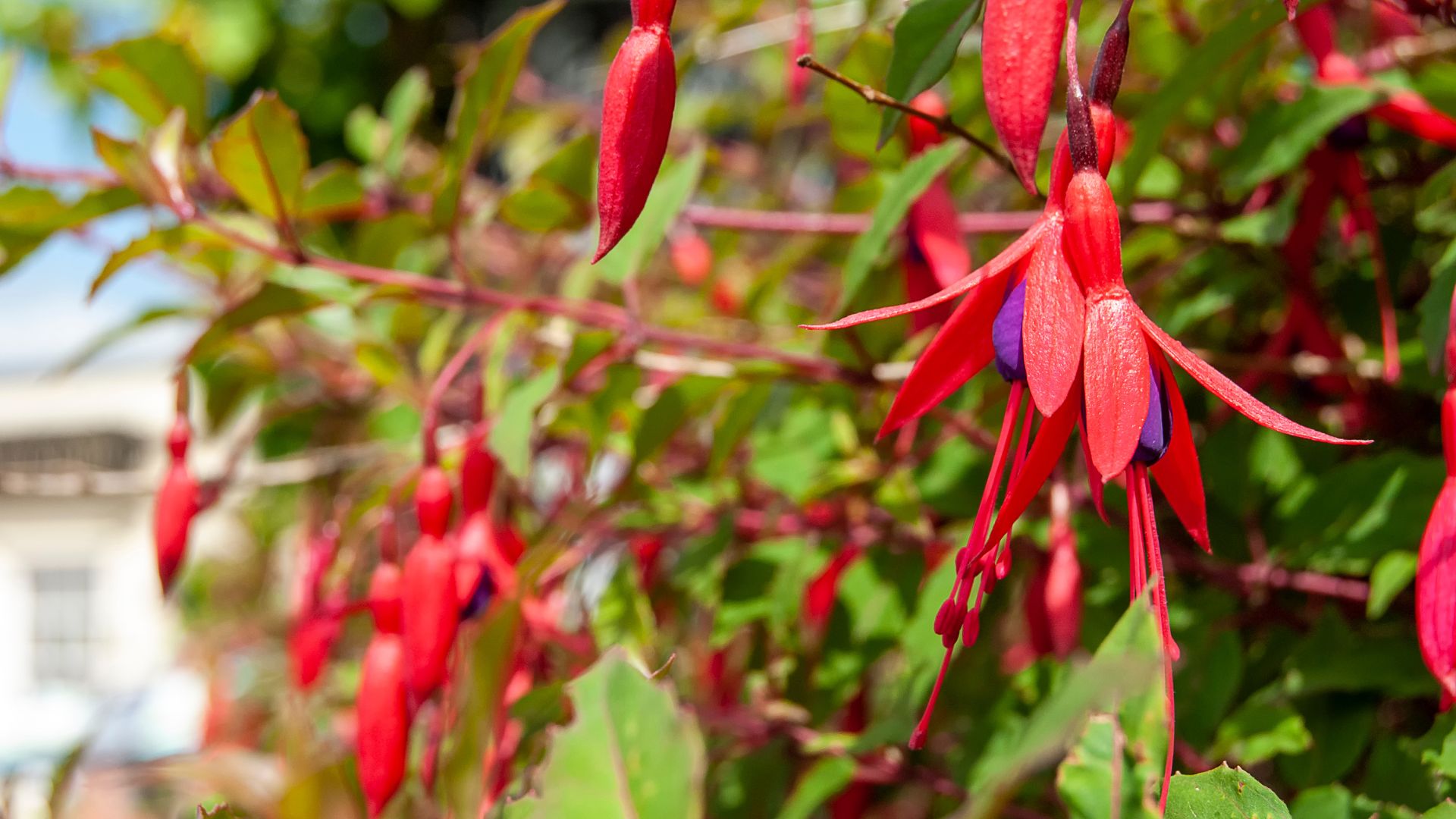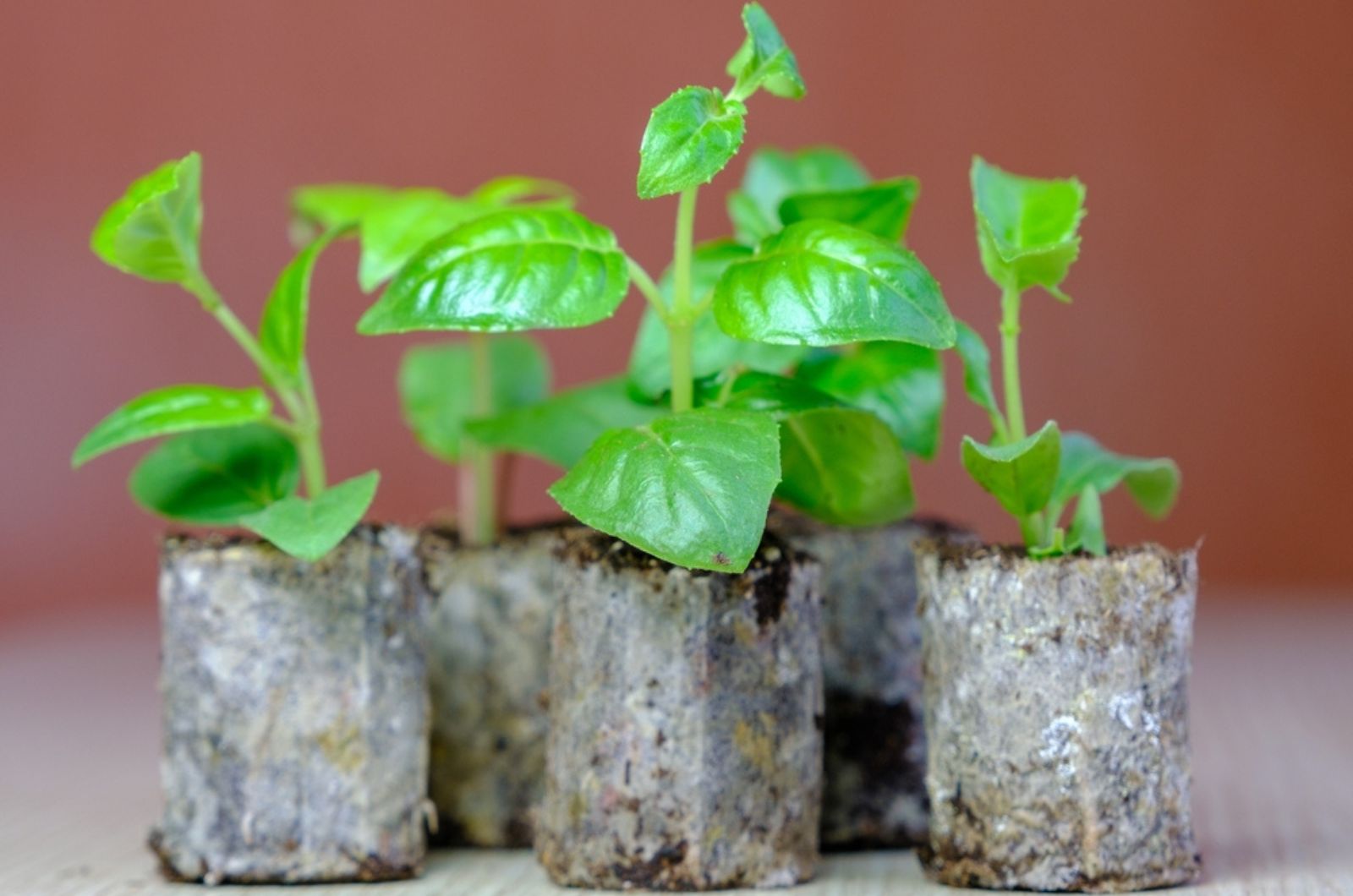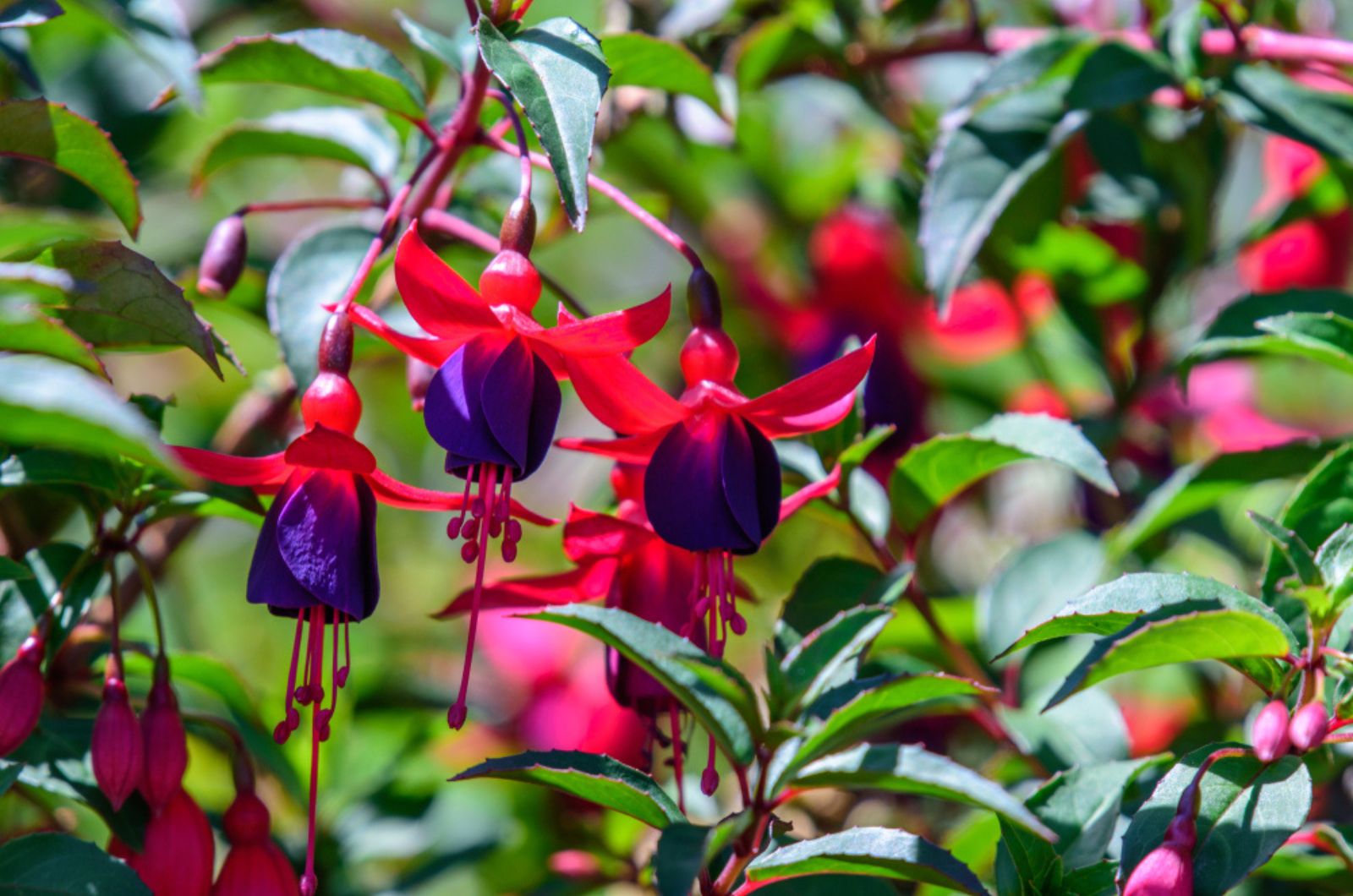Do you want to transform your garden into a vibrant display of colorful flowers that lasts through November and December? If so, then try growing hardy fuchsias!
Fuchsias are native to Central and South America, and most of the hardy varieties can even survive UK winters. These easy-to-grow flowers gracefully dangle from hanging baskets or stand tall in garden beds, making any winter garden more dynamic and lively.
In this article, we are going to share some useful tips on how to plant and grow hardy fuchsias. Stay tuned to find out more about these winter wonders!
Planting Hardy Fuchsias
The ideal time to plant hardy fuchsias would be from mid to late spring. They will have plenty of time to develop a robust root system before the temperature drops, which eventually helps them to endure freezing temperatures and start growing again as soon as spring arrives.
Strategically start preparing for planting hardy fuchsias by choosing the right location and amending the soil with the right ingredients.
Let’s discuss this in a bit more detail!
Where To Plant
Opt for areas with partial shade to protect the plants from intense sunlight, especially during the hottest parts of the day. Well-draining and nutrient-rich soil is essential, so add perlite or vermiculite to improve drainage and compost for enriched nutrients.
Pair your fuchsias with other shade-loving plants that can also endure colder temperatures. Combine different plants to add contrast and interest to the garden.
How To Plant
Dig a hole slightly larger than the root ball and gently place the fuchsia in it, ensuring it sits at the same depth as it did in its original container. Backfill the hole, water thoroughly, and consider applying a layer of mulch to retain moisture and suppress weeds.
Available Varieties
• Fuchsia ‘Lady Boothby’ – a lovely climbing variety that produces green foliage and deep pink to purple flowers.
• Fuchsia ‘Alce Hoffman’ – a bushy variety with white and pink flowers and bronze-green leaves. Perfect for larger pots or containers.
• Fuchsia ‘Mrs Popple’ – known for its bushy, upright growth and masses of flowers that bloom through summer and fall.
• Fuchsia ‘Rose of Castile’ – vigorous variety with upright growth habit and purple-pink flowers that look stunning.
• Fuchsia ‘Beacon’ – cultivar known for its pink-purple flowers. Often combined with purple-leaved heucheras or other purple-flowering plants.
• Fuchsia ‘Brutus’ – free-flowering variety that produces intense pink and purple flowers.
• Fuchsia magellancia – elegant cultivar with rich purple flowers and prominent green foliage. Often larger than other varieties.
Add more colors to your winter wonderland by growing some of these winter-blooming plants!
How To Take Care Of Hardy Fuchsias
Once your hardy fuchsias are planted, proper care is essential to ensure their continued health and prolific flowering. Hardy fuchsias require consistently moist soil, so water them deeply when the top inch of soil feels dry, especially during dry spells.
Feed your hardy fuchsias with a balanced, water-soluble fertilizer during the growing season. You can use a high potash fertilizer like tomato food. Pot-grown fuchsias should be fertilized once a week.
Deadheading spent flowers will prolong the flowering period. Cut back fuchsias in mid-spring or once the risk of frost has passed. Trim away frosted stems to live wood or to the base of the plant in case they are severely damaged.
While hardy fuchsias can withstand cooler temperatures, providing some winter protection is advisable, especially in harsh climates. Mulch around the base of the plants in late autumn to insulate the roots. In colder regions, consider adding a layer of straw or garden fleece.
Keep an eye out for common garden pests such as capsid bugs. These annoyances suck the sap from new shoots and weaken the plant significantly, which can ultimately inhibit flowering. Introduce natural predators like birds or ground beetles for natural pest control.
How To Propagate Fuchsias
You can easily propagate hardy fuchsias from hardwood cuttings. Take the fuchsia cutting in late fall by cutting a pencil-thick section of woody stem and pruning it to a height of about 15 cm, stopping just below a pair of leaves at the base. Remove the two lowest leaves.
Then, put some peat-free compost in a container, ensuring that the compost is firm and well-watered. Push the cuttings into the compost around the pot’s edge, making sure that about half of each cutting is submerged.
Keep the compost slightly moist and place the pot in a cool, frost-free place, such as a cold frame or unheated greenhouse. Springtime should bring new shoots. When the cuttings have produced leaves and grown on, plant them in separate pots in late spring.
Early summer is the time to plant them in their final growing places. Take good care of your new fuchsias by following the instructions above!
Also read: 5 Best Indoor Winter Flowering Plants



